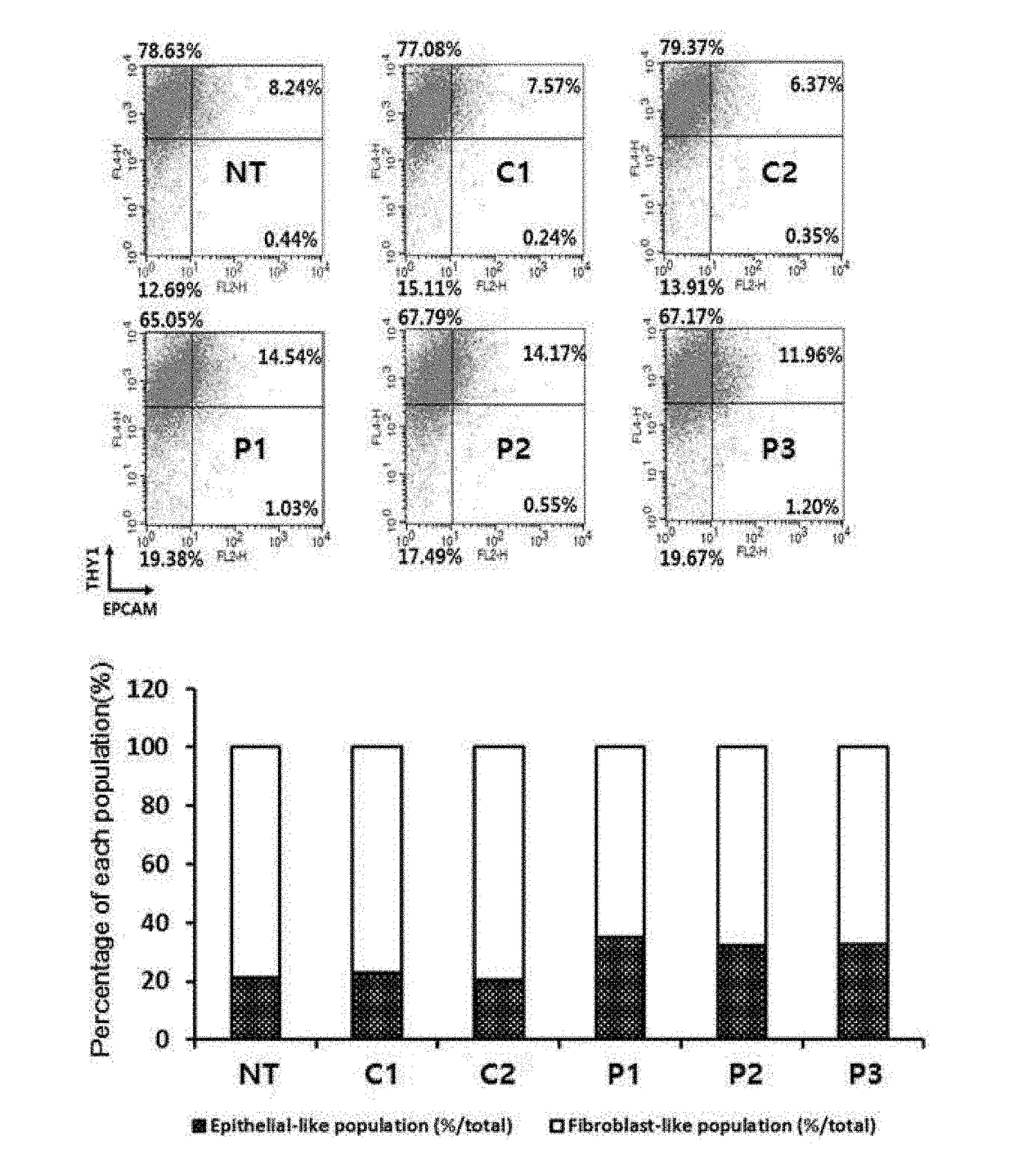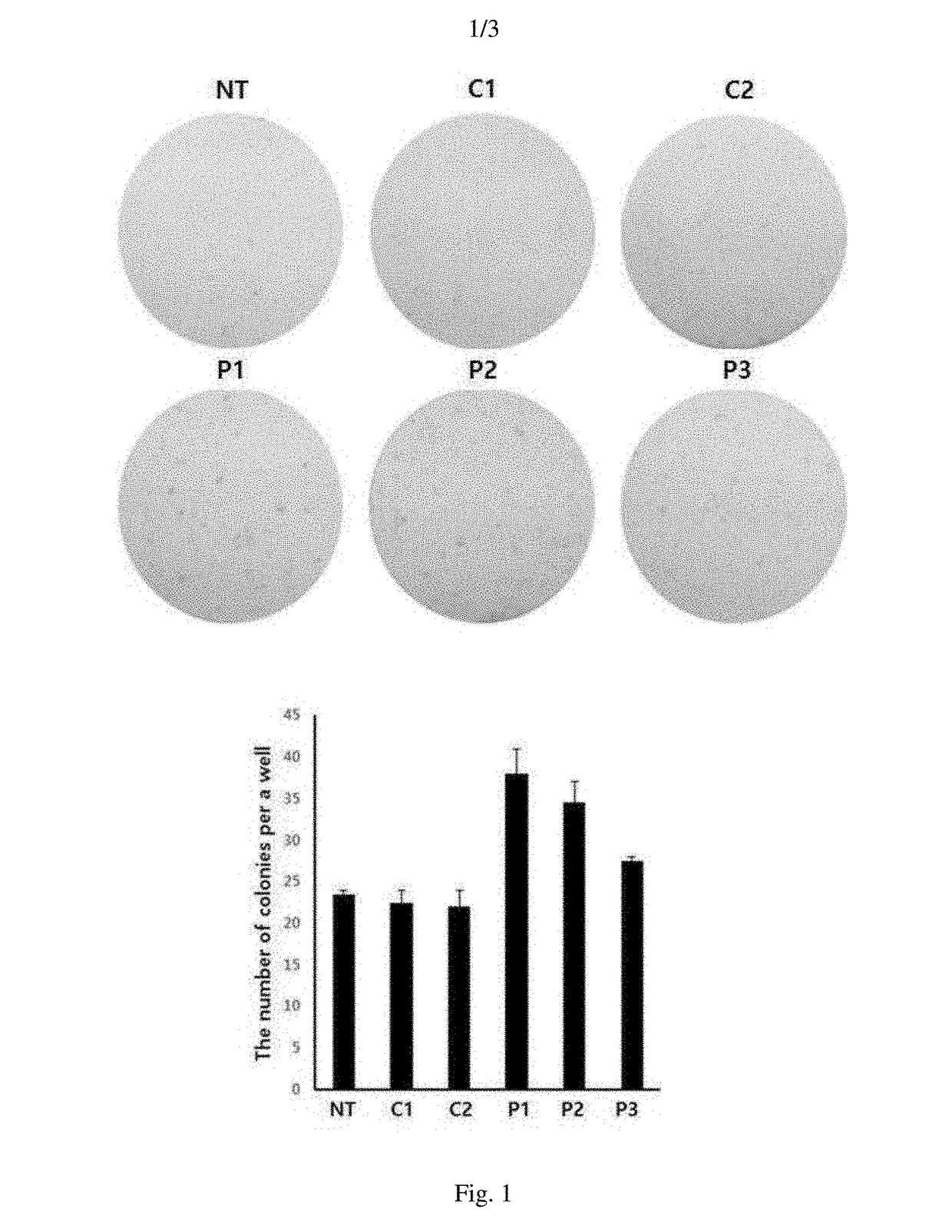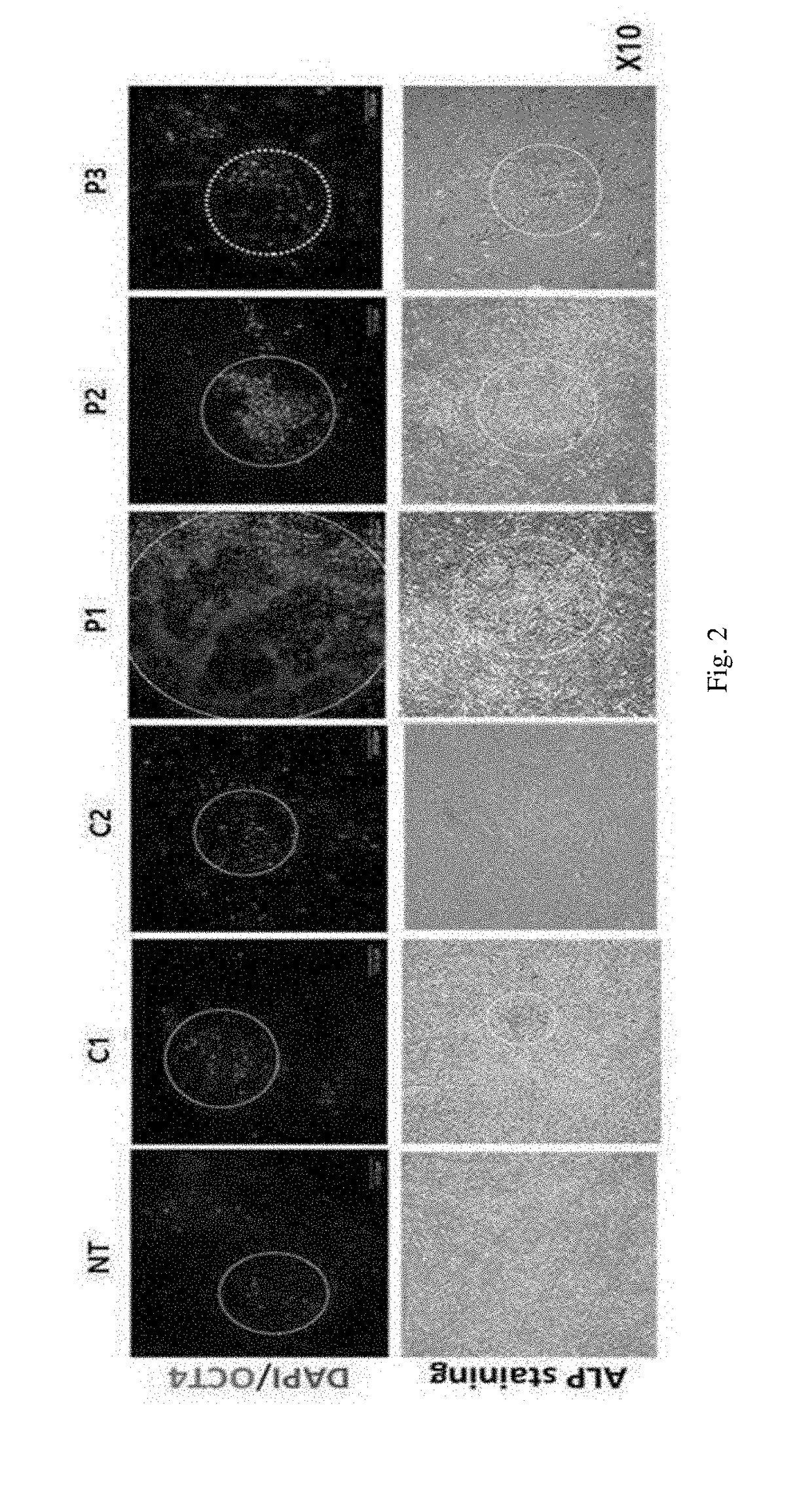Method for preparing induced pluripotent stem cells using synthetic peptide
a technology of induced pluripotent stem cells and synthetic peptides, which is applied in the direction of peptide sources, genetically modified cells, skeletal/connective tissue cells, etc., can solve the problems of inability to use them in clinical practice, inability and inability to use viruses to prepare ipsc for treatmen
- Summary
- Abstract
- Description
- Claims
- Application Information
AI Technical Summary
Benefits of technology
Problems solved by technology
Method used
Image
Examples
example 1
Synthesis of Dedifferentiation Induction-Promoting Peptide
[0044]A peptide P1 (GKCSTRGRKCCRRKK: SEQ ID NO: 1) was synthesized from a C terminal using a synthesis device by an F-moc solid chemical synthesis method. That is, the peptide was synthesized by using Rink resin (0.075 mmol / g, 100 to 200 meshes, 1% DVB crosslinking) bounded with 9-fluorenylmethoxycarbonyl (Fmoc-) as a blocking group, and 50 mg of Rink Amide MBHA resin was added in a synthesizer, the resin was swollen with DMF, and then a 20% piperidine / DMF solution was used to remove the Fmoc-group. In order of the sequence from the C terminal, 0.5 M amino acid solution (solvent: DMF), 1.0 M DIPEA (solvent: DMF&NMP), 0.5 M HBTU (solvent: DMF) were added by 5, 10 and 15 equivalents, respectively, and reacted for 1 to 2 hrs under a nitrogen stream. Whenever the deprotection and the coupling steps were completed, a washing process was performed twice with DMF and methanol. After the last amino acid was coupled, the Fmoc-group wa...
example 2
Verification of Induction Efficiency of Peptides for Dedifferentiation of Human Somatic Cells
[0049]2-1: Verification of Colony Number of Induced Pluripotent Stem Cells Using ALP Staining
[0050]In order to verify the dedifferentiation induction efficiency of each peptide, the DNAs of reprogramming genes Oct3 / 4, Sox2, c-Myc, Klf4, and Lin28 were introduced to human dermal fibroblasts (hDF) of 1.5×105 / well on a 6-well coated with 2 g of vitronectin recombinant human protein (VTN-N) by an electroporation method. According to a known method, the reprogramming genes were divided into three groups and cloned into three different episomal vectors and expressed together with p53 shRNA(pCXLE-hOCT3 / 4-shp53, pCXLE-hSK, and pCXLE-hUL) to enhance the establishment efficiency of dedifferentiation of stem cells (Okita, K. et al., Nat. Methods. 8(5):409-12, 2011). The cells introduced with the reprogramming genes were cultured in an Eagle's minimal essential medium (EMEM, ATCC) and the medium was rep...
PUM
| Property | Measurement | Unit |
|---|---|---|
| Fraction | aaaaa | aaaaa |
| Molar density | aaaaa | aaaaa |
| Concentration | aaaaa | aaaaa |
Abstract
Description
Claims
Application Information
 Login to View More
Login to View More - R&D
- Intellectual Property
- Life Sciences
- Materials
- Tech Scout
- Unparalleled Data Quality
- Higher Quality Content
- 60% Fewer Hallucinations
Browse by: Latest US Patents, China's latest patents, Technical Efficacy Thesaurus, Application Domain, Technology Topic, Popular Technical Reports.
© 2025 PatSnap. All rights reserved.Legal|Privacy policy|Modern Slavery Act Transparency Statement|Sitemap|About US| Contact US: help@patsnap.com



